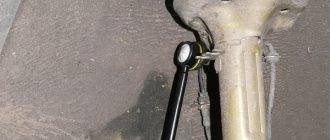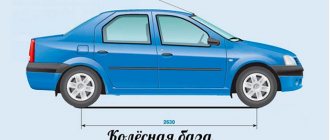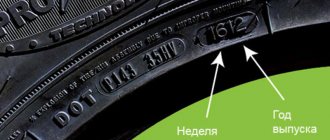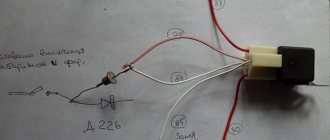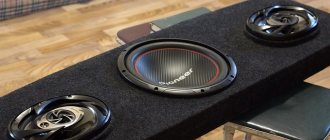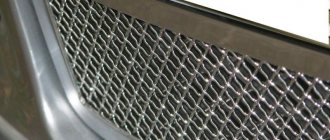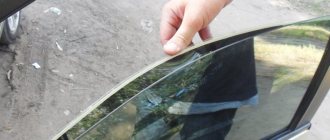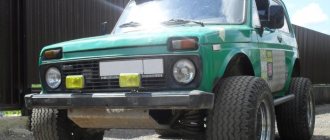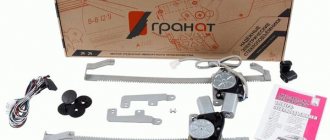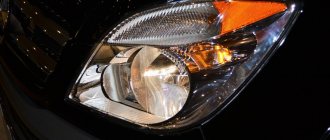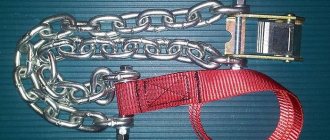Wheel arches sometimes have to be widened, especially in cases where the wheels protrude beyond their boundaries. For this purpose, wheel arch extensions are used. The design will not only improve the appearance of the car, but will also protect it from dirt and deformation. For external tuning, they use ready-made products or make them themselves.
Content
Types and materials
Installing arch extensions
How to make arch extensions from polyurethane foam
Sculpture plasticine
Styrofoam
Recommendations
An increasing number of car owners prefer to install tires with wide treads on their cars, and therefore are thinking about whether they need to make arch extensions with their own hands. The latest generation of wide-profile tires has become very popular. It improves the appearance of the car, makes it more stable on the road, the car handles better, turns easier, etc. This is explained simply. Thanks to the wide treads, the grip of the rubber on the road surface improves.
Arch extensions
However, in addition to a large number of advantages, this type of tuning also has its disadvantages. Installing this type of rubber provokes more contamination of the body surface. Sand, dirt, water, and gravel fly out from under the wheels. Drivers, accustomed to keeping their iron friend clean, did not like this, so they began installing the wheel arch covers with their own hands. What is it for?
Reasons for installation:
- protect car body elements from dirt flying out from under the wheels;
- make the appearance of the car more attractive.
It is possible to purchase ready-made ones, but you can make fenders yourself. The desire arises because the universal extenders sold in car dealerships have a fairly high price, so it is economically profitable to make them yourself. It is worth noting that not a single new car that comes off the assembly line is equipped with wheel arch extensions. This is simply not necessary, since each brand has its own type of rubber. The narrower it is, the narrower the wheel arches.
Types and materials
If you do install wide-profile tires on your car, you should install wheel arch extensions yourself. They come in different types and use different materials in the manufacturing process.
Rubber wheel arch extensions
Types of arches:
- Rubber. This type is offered in rolls in stores. Relatively cheap, has good resistance to mechanical damage and can serve as mudguards. They are most often installed on SUVs.
- Made from plastic. They are used mainly on low sedans, “shod” in tires with wide treads. Beautiful in appearance, but very impractical due to their fragility.
- Fiberglass fenders visually resemble plastic ones, but are highly durable. They are most often made independently.
- Fiberglass. They are very similar to fiberglass, but have greater impact resistance and are more expensive. They have good resistance to adverse climatic conditions.
Ready-made arches offered by manufacturers can be painted or unpainted. The latter are proposed to be painted in the color of the car after installation. Whereas painted wheel arches come in different colors and have both a glossy and matte surface.
Installing arch extensions
DIY wheel arches have some nuances that you need to know before you begin installation. Its method depends on the material from which this part is installed. To install the plastic parts, you will have to use a hair dryer. You will need it to bend the plastic to the shape of the wing bend.
Fiberglass arch extensions
For reliability, do-it-yourself fenders on arches should be secured not only with masking tape and sealant, but also with self-tapping screws for reliability.
Tools required to install extenders:
- drills 3 and 8 mm;
- screwdriver;
- various screwdrivers;
- electric knife and construction knife with replaceable attachments;
- socket head 24;
- open-end wrenches for 7 and 10.
Before starting work, you should wash the car using special detergents and dry it well. The car body where the arches will be directly attached must be degreased. This can be done either with special preparations or with alcohol diluted with water in a one-to-one ratio.
Ambient temperature is an important parameter to pay attention to. The recommended temperature should be between 19–25 degrees, and the car itself should not be lower than 21.
We will need a drill/driver
If you are using ready-made fenders, read the instructions and install according to the recommendations. We’ll now figure out how to widen the arches of a car with self-made fenders. In the process it is necessary:
- from the bumper mount, use a screwdriver to unscrew the self-tapping screw;
- Having adjusted the gap, install the lining;
- Without tightening the screw, secure the bumper;
- using a 24mm socket, unscrew the nut and remove the self-tapping screw from the fastening of the plastic threshold of the car (for installing the rear extension);
- after you have attached the fender to the arch, reassemble the plastic threshold;
- install fasteners, observing the gaps;
- Tighten all screws using the prepared screwdriver.
How to make arch extensions from polyurethane foam
Polyurethane foam is used for the manufacture of expanders for a reason. This material is very affordable and its price is low. When working with foam, keep in mind that it tends to increase in volume, so apply layers carefully.
Foam arch extensions
In order to make the part, you will need universal plastic fenders. They need to be attached to the car rail with self-tapping screws. Next, cover the expanders with foam and let it dry. Foam must be applied on both sides. Drying times are indicated on the packaging. Armed with a utility knife, you should shape the future Fender, and then sand it with sandpaper of different grits.
The final step will be to strengthen the structure by applying layers of epoxy resin and fiberglass. The layers should be dried, there should be 4-5 of them. After the part has completely dried, it is again sanded, primed and painted.
Sculpture plasticine
Using plasticine in your work has many advantages. It's easy and pleasant to work with him. Thanks to its plasticity, it can be perfectly given the desired shape. Correcting shortcomings will not be difficult. How to make wheel arches with your own hands from sculptural plasticine? Main processes:
- The body surface to be worked on should be covered with masking tape.
- Rub a thin layer of plasticine into the tape. Gradually thickening the layer to create the volume of the future part.
- Work out the symmetry of the parts.
- After giving volume and shape, cover with layers of resin and fiberglass, as in the previous version.
Body extension
Dear VladimirVS, hello. I have read a large number of topics on this forum, but still, I still have questions about registration for you.
1) The expansion affected the rear fenders, doors, sills and trunk. 2) The car was converted from a sedan to a coupe. 3) Custom bumpers were made. 4) The neck of the gas tank has been moved. The integrity of the neck has been preserved, only the location and hatch have changed. 5) New side windows were made from plexiglass, covered with a protective film on both sides. 6) The color of the car has been changed.
Manufacturing took place with the help of a qualified welder. The technical aspects of the car were not touched upon, only the visual ones. I studied the procedure (viewtopic.php?f=2&t=2194)
Questions: Is such a conversion possible? Where can I see an example of filling out an application to the traffic police?
- Registration: Apr 2009
- Posts: 3431
Re: Body extension
Purpose
Wheel arch extensions prevent dirt and small stones from entering the car body while driving.
Flare devices are often called mud flaps, fenders, fender flares.
The function of fenders is as follows:
- protect the body from dirty splashes;
- help prevent stones from getting on the surface of the car, which can cause deformation;
- give an expressive look to the car.
Wheel arches will need to be widened for SUVs and crossovers. Such tuning is useful for cars participating in races or rallies.
Installing the arched device is not difficult. After spending a couple of hours on repairs, you can make the overlays yourself. If you don’t have time for this, you need to go to a car store that sells different types of similar devices made in Russia and abroad.
A comment
- Registration: Apr 2011
- Posts: 20
Re: Body extension
Thank you for your quick response.
3) The bumpers were made “by hand”. Accordingly, there is no certificate. In my opinion, the bumpers comply with UNECE regulations No. 26. 4) It is necessary to take photographs. I will write a “mini-report” soon. 5) Glass, I assume, complies with UNECE rules No. 43, because were manufactured by analogy with certified glass. The fact is that I was officially refused by production, citing the refusal as being too small a batch. As if: “We won’t take on such an order, because... The minimum order should be 30 thousand rubles.” Therefore, glass was made in the same production, only “on the left”, through a familiar glazier. Accordingly, I cannot obtain a certificate for them.
I would be very grateful for your advice!
Varieties
The following materials are used for the production of mudguards:
- plastic. But according to experienced drivers, this material is not strong enough. Plastic wheel arch extensions perform a decorative rather than a protective function;
- fiberglass. It has great strength, but the cost is usually high. They are quite difficult to install;
- fiberglass. It is distinguished by its high elasticity and resilience; this material is often used to make do-it-yourself overlays;
- rubber - recently it was the only material for the production of fenders. It is characterized by elasticity and practicality, thanks to this it does not lose popularity even now. Rubber wheel arch extensions are universal and suitable for any car model. Their only downside is that rubber fenders do not have an elegant design;
- cable plastic is an economical option with excellent characteristics, and it is also easy to install;
- Duraflex is the best material for the production of expanders. It is elastic, resistant to the aggressive effects of natural factors, does not deteriorate under the influence of ultraviolet rays, and adheres well to the surface.
Rubber wheel arch extensions are the most common because they are practical and easy to install.
Features of the material
Most drivers choose plastic fender flaps for the Niva 2121. The material is highly durable and, when properly processed, the flare does not corrode and provides reliable protection.
The price of plastic wings for Niva Vis starts from 2,400 rubles. In 70% of variants, pickup trucks are sold already with overlays. Plastic parts are made of low-density polyethylene, and ABS is used for the wing. Main advantages:
- resistance to corrosion;
- allow installation of larger diameter tires;
- plastic is UV resistant;
- high strength and flexibility.
The disadvantages of wings and extensions include the need for complete replacement under mechanical influence of medium force. If a dent forms on the steel plate after an impact due to careless parking, the plastic element will crack in this case.
Popular manufacturers
Foreign and Russian companies are engaged in the production of specialized car fender flares. The most famous and reputable manufacturer is Bushwacker (USA). The plant produces a wide variety of additional accessories for cars. Bushwacker products are of high quality and resist the destructive effects of salts and acids, as well as ultraviolet rays. A distinctive point: the company includes fastening elements with its products.
No less popular are the car accessories of the Spanish company GFG, which has been producing various parts for car tuning for 50 years, including wheel arch extensions.
Among the rest, the largest auto company ARB from Australia stands out.
Among Russian manufacturers there is also “Master-Sport”. They produce wheel arch extensions for domestic cars:
Companies produce tapes and sheets for mud flaps that are suitable for any car. Russian expanders have a reef width of 5 cm.
How to make fenders with your own hands
You can make your own wheel arch extension. The main thing is to choose good material. Expanded polystyrene is actively used in production: it is lightweight and at the same time durable, amenable to mechanical processing. Polystyrene foam pads are made like this:
- pieces of expanded polystyrene are glued to the body;
- after drying, they are given the desired shape with an electric knife or sandpaper; apply a layer of resin - it will increase strength, then carefully so that air bubbles do not appear, apply fiberglass;
- after drying, putty is applied, and when it dries, the surface is sanded to smooth it;
- At the final stage, the trim is primed and varnished to match the car body.
Sculptural plasticine is used for the same purposes:
- work areas are covered with a mounting layer;
- The plasticine is softened, spread on the wings, rubbed into the tape and resulting in an even layer. After this, the pieces are made larger;
- all arches must be symmetrical, so the next stage is aimed at achieving this effect. The work is very painstaking, it is better to make a reef 5 cm wide;
- Next come layers of resin and fiberglass (3 layers), then everything is left to dry;
- the structure is removed and the inside is cleaned of plasticine;
- The part is secured with sealant and self-tapping screws to the body, puttied, then sanded.
Application of polyurethane foam
Another suitable material for forming wheel arch extensions is polyurethane foam. Working with it is quite simple, and the algorithm looks like this:
- We use standard plastic fenders as a basis - we divide them into parts and fix them with self-tapping screws on the car body.
- First, from below, and then from above, we blow out layers of polyurethane foam.
- We wait until it dries, after which we give it the desired shape using sandpaper and a knife.
- For strength, we coat the resulting fenders with epoxy and fiberglass, as described above.
- Next we putty, sand, prime and paint as indicated in the previous sections.
Installation
Store-bought fenders for arches must be secured in a special way. Standard fastening of the expander is carried out using the following tools:
- drill;
- drill;
- automotive tools;
- scissors.
Installation of plastic expanders is carried out only at positive air temperatures.
The car must first be washed and dried, and the working areas must be degreased. Then they lay out the kit and begin installation.
- The factory screws are unscrewed, the protective film is partially removed and the expander circuit is released.
- The overlay is applied to the bridge and the existing gaps that have formed between the part and the wing are adjusted.
- Install the standard screws, but do not tighten them.
- Place the complete fasteners.
- Remove the protective coating from the adhesive tape on the expander and press the pad tightly against the machine body. For reliability, you can drill the product with self-tapping screws.
During installation, plastic expanders need to be heated with a hairdryer so that they become more elastic and take the desired shape.
After installation, the car should be kept in a warm place for two days.
Rubber expanders are an elastic band, usually 6 meters long. The installation process consists of the following steps:
- measure the wheel arch;
- cut the canvas to the required size;
- the polyvinyl chloride strip is inserted into the groove of the fender;
- the part is tightly applied to the wing and holes are made with a drill;
- The tape is secured using self-tapping screws.
Fenders on the arches will help protect your car from dirt and give it a stylish look. Automotive stores have a wide range of linings made from different materials. Buy them ready-made or make arch extensions yourself - the choice is up to the driver.
A comment
- Registration: Apr 2011
- Posts: 20
Re: Body extension
Fuel tank neck: The neck is a bowl with two tubes. The first is intended for direct fuel filling, the second is for feedback from the engine and air release when filling the gas tank. Initially, the neck was in its standard place, on a rubber suspension and connected to the fuel hoses using clamps. In this regard, it was not difficult to dismantle the product, which preserved the integrity of the rear wing. When the neck was moved to the upper part of the “visual extension of the body,” there was no change in the integrity of the product. The fuel hoses were extended using oil/gasoline resistant pipes from a GAZelle car and secured with clamps. The visual transfer length is approximately 100mm. The neck has been tested and meets all original specifications. Welding work was carried out while maintaining safety requirements.
Types of fenders
Wheel arch extensions are presented on the modern market in several variations:
- universal. These are rubber pads sold in rolls. The use of such parts has no restrictions on the make or model of the vehicle - when installed, they can easily be adjusted to any arches. But despite the excellent protective properties, universal arch extensions do not have an elegant design and significantly worsen the appearance of the car, which is why they are most often purchased by SUV owners;
- plastic. They are attractive, but are produced for a specific model. Fixation to the body is carried out using self-tapping screws. A significant disadvantage of plastic wheel arch extensions is the low level of protection and fragility, so they are most often used for beauty;
- fiberglass. The pads are quite durable and look like plastic ones. Most often they are made by hand or made to order;
- fiberglass. They are characterized by excellent appearance, as well as good protective qualities. They are quite expensive. In addition, the installation of these elements is a labor-intensive and complex process. To install such a wheel arch extension, you must first clean its surface and apply a layer of putty. After this, the trim is aligned with the car body, secured with self-tapping screws and painted with the appropriate shade of paint.
Wheel arch extensions are presented on the modern market in several variations
What to process
Progress does not stand still, so at the moment several radically different coating methods have been developed. They differ in execution and are performed in the form:
- aluminum linings;
- plastic linings;
- applying a special coating;
- adhesive special protective film.
Note! All of these methods are approximately the same in cost, but differ in quality.
It is necessary to consider each of the options and take into account their positive and negative sides.
Aluminum trims
In this case, a rather outdated method of fixing special metal coatings is used that resist damage and the influence of harmful factors.
If everything is clear with this, then it is important to outline the disadvantages of this method:
- The rubber seals used over time wore away the wheel opening coatings and contributed to corrosion.
- The surfaces on the sides were not covered with plates and had no protection.
- Aluminum is a soft metal and therefore breaks down quickly.
- Aluminum trims became damaged, worn out, and came off along with fasteners that damaged vehicle components.
Due to these factors, this method of protection was not widely used and was replaced by the use of plastic linings.
Plastic
Has gained quite high popularity at the present time.
On a note. Plastic protection parts are made from durable and environmentally friendly material that is suitable for various conditions.
The method has shown high efficiency in Russian conditions and has the following advantages:
- Excellent protection against exposure to small elements such as sand and salt, which are actively used as coatings against snow and ice.
- It has high wear resistance and a long service life without loss of basic qualities.
- High protection against rust.
- Can serve in conditions of low and high temperatures from -50 to +50 degrees Celsius.
Coating
It is also a fairly common method. Can protect against rust and mechanical damage from small and relatively large elements. But at the same time, some car owners complain about the low level of noise protection.
The material used is a liquid coating, which is produced by many manufacturers. After application and drying of the product, anti-corrosion treatment is used.
Film
The production of special protective film has currently gained high popularity. Not only the wheel arch openings are protected, but also many other components and parts of the car. It has a high thickness and does a good job of protecting against the impact of small particles. More often used for gluing to the hood or bumper, but thick film is also used for arches. The advantage of the method is the visual concealment of the transparent film.
Popular manufacturers
Today, many domestic and foreign companies are engaged in the production of extenders for car wheel arches. The following have proven themselves to be the best:
- Bushwacker is an American company with many years of experience, producing a variety of accessories for various models of SUVs and pickups. The production uses high-quality materials that are resistant to ultraviolet radiation, low temperatures, and also resist the destructive effects of acids and salts found in dirt or natural waters.
- GFG is a Spanish company known not only for its accessories for vehicles, but also for the production of special additives that make the car more economical and the fuel materials used by the car owner more environmentally friendly.
- Cezar is a Polish company that produces high-strength plastic tape materials.
- Master Sport and Russian Artel are Russian companies that are equally successful in manufacturing wheel arch extensions for domestically produced cars - Zhiguli, UAZ, Lada Niva.
Bushwacker Wheel Arch Extension
How to make a fender with your own hands?
You can make a wheel arch extension for a car yourself from different materials:
- Expanded polystyrene (foam plastic). It is an excellent material for widening arches on a car, featuring the following advantages:
- ease;
- high compression resistance;
- non-hygroscopic;
- flexibility to machining;
- affordable price.
Expanded polystyrene is an excellent material for expanding car arches
Wheel arch extensions made of polystyrene foam are made as follows:
- pieces of polystyrene foam are glued to the car body using special glue (it is best to use Macroflex);
- after the glue has completely dried, use an electric knife and sandpaper to adjust it to the desired size and shape;
- To increase strength, a layer of resin is applied to the foam, followed by fiberglass. In this case, it is necessary to carefully ensure that no air bubbles form;
- after the previous layers have dried, putty is applied to the manufactured part, which, after drying, is necessarily subjected to a grinding process in order to smooth out unevenness, as well as ensure a smooth transition of the expander to the car body;
- the surface is treated with a primer;
- Finally, the structure is painted with a paint material matched to the tone of the car body.
- Sculptural plasticine. To produce expanders, you can also use special plasticine. Process steps:
- the working surface of the body is covered with mounting tape;
- soften the plasticine and spread it on the wings - first you need to rub small portions into the tape until a thin, uniform layer is obtained, and then, in large pieces, the required shape is created;
- Next, it is necessary to achieve symmetry between the wheel arches - experienced car enthusiasts claim that this is the most painstaking part of the work;
- apply layers of resin and fiberglass (must be at least three layers);
- after drying, the structure is removed from the body along with the sculptural plasticine, the inner surface of the fender is cleared of plastic mass;
- attach the part to the body using sealant and self-tapping screws;
- putty, sanding and applying a paint layer.
- Polyurethane foam. The manufacture of car wheel arch extensions from polyurethane foam, a cheap and very durable material, is becoming increasingly popular. Wheel arch extensions made from polyurethane foam do the following:
- a plastic arch is taken as a basis - it is cut into pieces and fixed to the body with self-tapping screws;
- foam is applied outside and inside the arch;
- after complete hardening, armed with sandpaper and a utility knife, future wheel wideners are trimmed and given the required shape;
- the structure is sealed with resin and fiberglass (it must be laid in at least 2 layers);
- finishing processes – sanding, priming, etc.
We expand the wheel arches of a car using polystyrene foam
Expanded polystyrene is great for widening the wheel arches of your car. It has the following advantages:
- affordable price;
- non-hygroscopic;
- low specific gravity;
- excellent machinability;
- high compression resistance;
- non-flammability.
The process of working with polystyrene foam in our case is as follows:
- Using Macroflex we glue the foam pieces to the car body.
- Using a knife and sandpaper, we give the material the desired shape.
- We apply resin to the treated polystyrene foam.
- We overlap the fiberglass, making sure that there are no air bubbles.
- We wait for the fiberglass to dry and perform puttying.
- We grind the dried putty, fill all the irregularities with filler and wait for it to dry.
- We sand again and treat with a primer.
- After the primer has dried, we paint the arches to match the color of the rest of the car.
DIY wheel arch covers
DIY arch extensions
The use of wide-profile rubber on cars and SUVs is accompanied not only by a change in appearance, but also by severe contamination of the car body. Wheel arch extensions or, as they are also called, fenders, allow you to level out these negative aspects. You can implement your plans in different ways.
Inflated wheel arches perform two main functions at once:
- Protect the fenders and doors of the car from damage to the paintwork by stones thrown from under the wheels,
- They give the appearance of the entire body an attractive and “muscular” appearance.
At the end of the article, watch the video instructions on how to make arch extensions with your own hands.
There are several popular methods that are used by motorists to increase wheel arches.
Universal and original fenders for arches
On sale there are both universal wheel arch extensions and original body kits.
- Universal rubber fender flares are sold in roll form. They are usually used by SUV owners. But these additional elements for the body can only fulfill one of the assigned tasks. Rubber fenders will protect the arches from the effects of stones and sand, but they cannot improve the appearance of the car, which is why they are not widely used in car tuning.
- Universal plastic fenders are found on sale in the form of curved blanks. They are mounted to the arch using self-tapping screws.
- Fiberglass body kits can often have defects, both in configuration and in the quality of cutting. Only those motorists who are not afraid of dirty work with putty can install such expanders.
- When installing, it is important to initially accurately attach the material to the arch with self-tapping screws.
- The wing is first protected with masking tape, after which the “blown” arch is puttied.
- After drying, the surface of the fender is smoothed with sandpaper and painted in the body color.
An alternative to purchased fenders can be homemade wheel arch extensions.
Plastic protection
Such lockers have been used for quite a long time. It is better to install plastic protection on new cars that have not yet been exposed to much contamination. They are suitable for both Russian cars and foreign cars. Special polyethylene is used for their production. This material is quite elastic, its wear resistance is at a high level, and it is precisely these qualities that are important on Russian roads.
The plastic used in the production of lockers does not change its characteristics even at extreme temperatures. This type of protection has its undeniable advantages:
- Decent protection against de-icing agents.
- Protection against corrosive processes.
- The initial form remains for quite a long time.
- Strength.
- Consistency of characteristics at high and low temperatures (from -50 to +50).
But there are some drawbacks here, the main one of which is considered to be the method of fastening plastic using self-tapping screws
. This may well lead to corrosion in the areas where the holes form. But experts believe that this statement is relevant only in the case of unprofessional installation of protection. When drilling holes, professionals use anti-corrosion and special galvanized screws, so the risk of rust is reduced to zero.
In addition, if you choose lockers designed for use on a specific car, then you won’t have to drill anything. Manufacturers combine all technological holes with mounting points under the wheel arch of the vehicle for which these lockers were intended. Each car uses its own fender liner model.
How to make wheel arch extensions with your own hands?
As a rule, all homemade fenders for arches are made of fiberglass. However, the basis of such expanders may be different.
Below we provide a brief description, and at the end of the article there is a video that clearly shows how you can make fenders for arches with your own hands.
Arch extensions based on polystyrene foam (foam)
A good material for increasing the volume of wheel arches is polystyrene foam. The sequence of manufacturing styrofoam-based fenders will be as follows:
- Pieces of the required size are glued to the surface of the body using “macroflex”.
- After the glue has dried, the foam styrene is processed with an electric knife and coarse sandpaper.
- The treated surface is covered with a layer of resin and fiberglass to add strength.
- The pieces of fiberglass are laid overlapping each other; it is important to remove any air bubbles that appear in a timely manner.
- When the fiberglass layer is dry, a rough putty is applied.
- The dried surface is smoothed with sandpaper.
- Existing sinks are filled with a finishing layer of putty.
- If necessary, several more layers of fiberglass are applied, followed by puttying, sanding, priming and painting.
Making fenders for arches using sculptural plasticine
Fender flares can also be made from fiberglass using sculpting clay.
- The working surface of the body element is previously covered with masking tape.
- Softened plasticine is spread on the wings. First, the material is rubbed into the masking tape in a thin layer, and then the volume of the arch is created in large pieces.
- The most difficult job will be giving the arches a symmetrical shape.
- Next, epoxy resin and fiberglass are applied. The number of layers must be more than three.
- After drying, the resulting expander matrices are removed along with the plasticine. The inner surface of a homemade fender is cleaned of plasticine.
- All that remains is to fit the parts in place and attach them to the arches using self-tapping screws and sealant.
- The final stage will be the same finishing operations of grinding and applying paints and varnishes.
Arch extensions based on polyurethane foam
To make a mold for expanding the arch, you can also use polyurethane foam as a base.
- The base is made from universal plastic arches. The plastic is cut into pieces and attached to the wing with self-tapping screws.
- Polyurethane foam is applied immediately inside the arch, and then outside.
- When the foam has completely hardened, the arch is trimmed to the required geometry using a utility knife and sandpaper.
- The next step will be to reinforce the structure using fiberglass and resin. A minimum of 2 layers of fiberglass should be applied.
- All that remains is finishing (sanding, priming and painting).
It makes sense to widen the wheel arches only when the car has wide tires.
Blown arches will not only change the design of the car, but will also save body parts from chips and damage.
Using sculptural plasticine
If you were good with plasticine in school, you can use this skill to fashion extensions for your car from it. The algorithm consists of the following stages:
- Contact areas of the body are covered with construction tape.
- Sculptural plasticine is glued to adhesive tape, and overlays are formed from it. This is quite painstaking work - you need to ensure the correct shape and symmetry.
- Once you are satisfied that the shape suits you and both sides look symmetrical, you can coat the resulting pieces with epoxy resin and fiberglass. At least 3 layers should be applied.
- After drying, remove the plasticine from the mold.
- Fix the resulting products with self-tapping screws on the body of your car.
- Next - perform puttying, priming and painting, as described in the previous section.
DIY wheel arches
